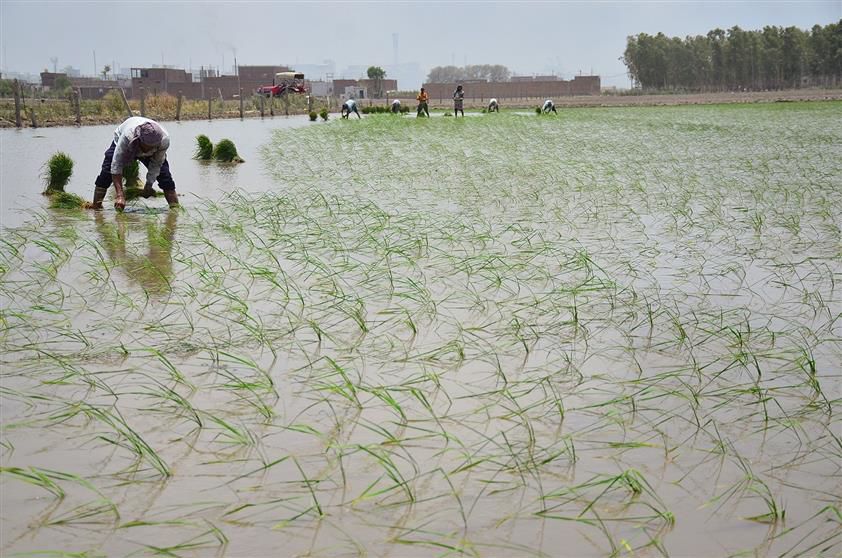Direct seeding of rice target distant dream, 18% achieved so far
Ludhiana, July 3
The target fixed under the direct seeding of rice (DSR), in which seeds are sown in the field rather than by transplanting seedlings from nursery, seems to be a distant dream as almost 18 per cent of the targeted area was covered in the district so far, the Agriculture Department has confirmed.
Though the state government was undertaking an aggressive campaign to motivate farmers to opt for the DSR, the majority of them were going for traditional paddy transplantation in the state’s biggest and largest district, in terms of area and population, officials have maintained.
A visit to various parts of the district revealed that the sporadic rainfall during the past few days has facilitated paddy transplantation through traditional means while the shortage of power and water had earlier remained the main reasons for the poor response to the transformation from the traditional paddy sowing, for which Chief Minister Bhagwant Mann had given a clarion call to save water and natural resources in the agrarian state.
According to official figures available with The Tribune, as much as 1,091 hectares have been covered through the DSR in the district so far, which accounted for 18.18 per cent of the target area of 6,000 hectares, in Ludhiana. It was also less than 1,381 hectares covered under the DSR during the corresponding period last year.
With almost 1,63,145 hectares of area already been covered through traditional paddy transplantation, a total of 1,64,236 hectares have already been covered under the paddy cultivation in the district so far, which accounted for 64.03 per cent of the total 2,56,500 hectares expected to be put under paddy farming in Ludhiana district this season.
This year’s expected paddy area was less than 2,56,910 hectares put under rice cultivation last year, 2,58,800 hectares in 2022-23, 2,58,700 hectares in 2021-22, and 2,58,600 hectares in 2020-21.
The data compiled by the Agriculture Department revealed that the Sidhwan Bet block was leading the district with a maximum of 28,407 hectares put under paddy cultivation so far, which included 107 hectares through the DSR, while the Samrala block was at the bottom with the minimum of 4,030 hectares of paddy cultivation, including 30 hectares under the DSR.
Among other blocks, Sudhar has so far sown rice in 20,103 hectares, including 103 hectares under the DSR, Mangat 18,385 hectares, including 135 hectares through the DSR, Machhiwara 17,399 hectares, including 184 hectares under the DSR, Jagraon 16,750 hectares, including 200 hectares through the DSR, Doraha 14,836 hectares, including 36 hectares under the DSR, Pakhowal 14,610 hectares, including 110 hectares through the DSR, Khanna 12,390 hectares, including 100 hectares under the DSR, Ludhiana 9,280 hectares, including 40 hectares through the DSR, and Dehlon block has cultivated 8,046 hectares under paddy, which included 46 hectares through the DSR.
Promoting DSR: DC
“We have been reaching out to peasants to motivate them to opt for the DSR technique, which yields Rs 1,500 per acre financial assistance from the state government, besides saving natural resources. Those who have opted during previous years, have already been given the cash incentive,” said Sakshi Sawhney, DC.
What farmers say
“There has been no use of the DSR except Rs 1,500 per acre compensation, which too is meagre when it comes to overall costs and returns,” says Didar Singh from Samrala.
“When we were planning to go for the DSR, there was no adequate power and water supply. Later, the rain prompted us to continue with traditional paddy transplantation,” said Surjit Singh from Doraha.
“The government has been making tall claims and big announcements but powers that be seldom visit the fields to know the ground reality, through which we are passing through,” said Amrik Singh from Dehlon.









